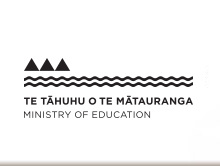Taku Poi e
nā Juanita Teepa
He Whakarāpopoto
He tuhinga whakaahua tēnei e whakaatu ana i ētahi kupu mō te poi me āna mahi ā-ringa. Tokotoru ngā kōtiro e whakaatu ana i ngā momo mahi a te poi, arā, ko te tangi, te rere, me te tū o te kaiwhakaari.
Summary
This is a descriptive story, describing words and movements associated with using a poi. There are three girls demonstrating poi use and movement including things such as sound, rhythm, and the stance of the performer.
| Te momo reo tuhi Language style |
|
|---|---|
| Ētahi āhuatanga o tēnei momo reo tuhi Features of this language style |
|
I te Ākonga e Pānui ana i te Pukapuka
During Reading
1. Matapakihia he aha te manawataki. Pātai atu mēnā kei te rongo rātou i te manawataki e puta mai ana i ngā kōrero. Āta pānuihia anō ngā kōrero kia rongo ai rātou.
Discuss what rhythm is. Ask whether they can hear any rhythm from the text. Read the text again so that they can hear it.
2. Mahi takirua. Tirohia ngā kupu ā-kaupapa e whakaahua ana i te āhua o te poi me tōna rerenga. Tuhia ētahi o ēnei kupu, ā, matapakihia.
Work in pairs. Look at the specific topic language that describes the characteristics of the poi and its movements. Write some of these words and discuss them.
3. Me mahi takirua. Hangaia tētahi tūtohi e whakaatu ana i ngā kupumahi me ngā kupu āhua nō roto i te tuhinga kia matapakihia te whakamahi i ēnei kupu.
Working in pairs students construct a chart that displays verbs and adjectives from the text so that they can discuss the different uses of these words.
I Muri i te Pānui Pukapuka
After Reading
1. Matapakihia he aha tētahi tākaro e pai ana ki ngā ākonga. Ākina rātou kia tāngia tētahi pikitia e whakaatu ana i taua mahi. Mā te āta titiro ki te pikitia, tērā pea ka whakaarohia ētahi kupumahi me ētahi kupuāhua e whakaahua ana i ngā āhuatanga kei roto i taua pikitia.
Discuss a favourite game or activity with your students. Encourage them to draw a picture that shows details of that activity. From their picture, they should be able to think of verbs and adjectives that describe what is happening in their picture.
2. Mahi ā-rōpū. Ka waiata mai i te waiata kei muri i te pukapuka. Mā te kaiako tētahi rangi e hanga.
Group work. Sing the song at the back of the book. The teacher will make up a tune.
3. Mahi ā-rōpū – kia rima ngā ākonga ki ia rōpū. Ka waihanga mai ngā rōpū i ētahi nekehanga me ā rātou poi. Ka whakamahia anō ētahi o ngā kupu nō roto i te pukapuka. Ka whakaatu ki te akomanga.
Group work – about five students per group. Each group will create some actions with their poi. They should use some of the words from the story. Then they present the actions they have devised to the class.






